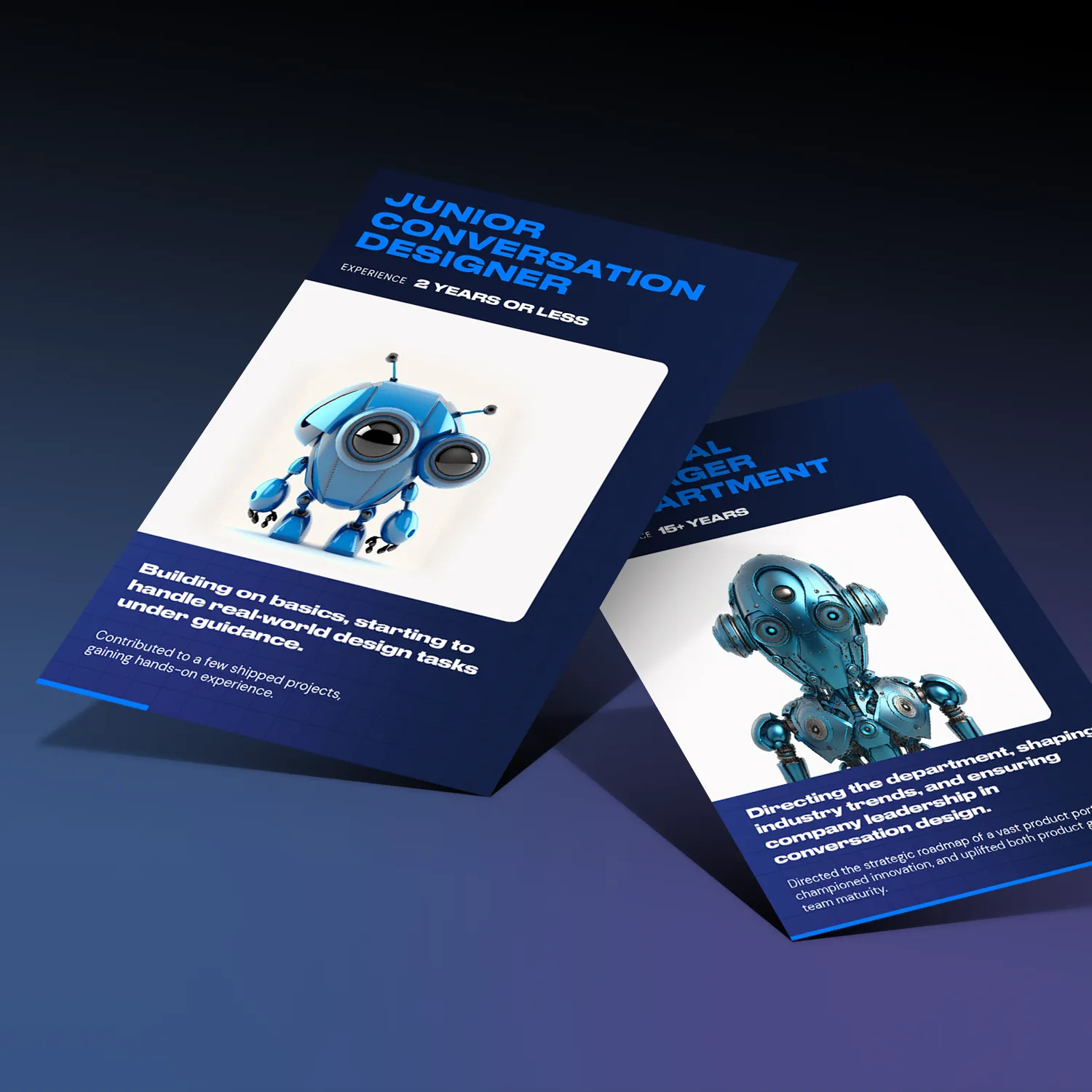The framework
The framework includes three key parts: business journey milestones, assistant journey milestones, and map out business and assistant journeys.
Here’s an example of using the framework for a retail shopping experience focused on activating new sign-ups towards a first purchase.
Step 1
Write down the business journey milestones that the overall team cares about and tracks.
For the retail business, a few examples might look like:
- New audience / user - high Intent
- Browsed product catalogue
- Added item to cart
- Complete purchase
- Returning customer
Step 2
Identify the assistant journey milestones in relation to the business milestones from Step 1.
The conversational journey milestone might look like this:
- New user = 0 sessions that clicks start button
- Reached product carousel in the assistant
- Added item from product carousel to cart
- Finished checkout flow via component
- Returning user, > 1 sessions
Step 3
Now that you have both the business and conversational journeys that matter plotted out to analyze, it’s time to map the both.
You’ll notice that your assistant either 1) has many high intent buying moment that you haven’t recognized or 2) needs additional design work to better map to the customer buying journey.
The framework then would ideally look something like this:

The established buying journey now has a tangible touchpoint within the assistant which is measurable and trackable.
Product, revenue, and conversational AI teams can then all rally behind creating a great customer experience that is trackable and mapped back to revenue at key points. Best of all, conversation design teams will start to see how much of a true impact their assistant has on customer experience and buying behavior in comparison to other business channels.
Ready to make these ROI design decisions easier? Chat with our team.
The framework
The framework includes three key parts: business journey milestones, assistant journey milestones, and map out business and assistant journeys.
Here’s an example of using the framework for a retail shopping experience focused on activating new sign-ups towards a first purchase.
Step 1
Write down the business journey milestones that the overall team cares about and tracks.
For the retail business, a few examples might look like:
- New audience / user - high Intent
- Browsed product catalogue
- Added item to cart
- Complete purchase
- Returning customer
Step 2
Identify the assistant journey milestones in relation to the business milestones from Step 1.
The conversational journey milestone might look like this:
- New user = 0 sessions that clicks start button
- Reached product carousel in the assistant
- Added item from product carousel to cart
- Finished checkout flow via component
- Returning user, > 1 sessions
Step 3
Now that you have both the business and conversational journeys that matter plotted out to analyze, it’s time to map the both.
You’ll notice that your assistant either 1) has many high intent buying moment that you haven’t recognized or 2) needs additional design work to better map to the customer buying journey.
The framework then would ideally look something like this:

The established buying journey now has a tangible touchpoint within the assistant which is measurable and trackable.
Product, revenue, and conversational AI teams can then all rally behind creating a great customer experience that is trackable and mapped back to revenue at key points. Best of all, conversation design teams will start to see how much of a true impact their assistant has on customer experience and buying behavior in comparison to other business channels.
Ready to make these ROI design decisions easier? Chat with our team.






.svg)